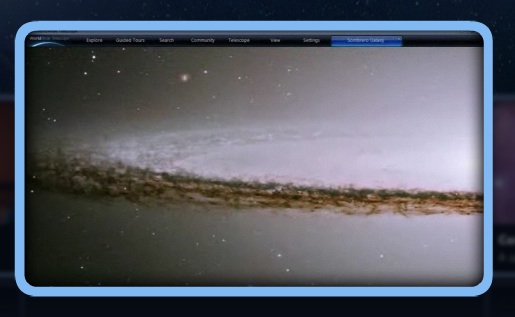I recently came across this really cool article from the Mental_Floss Blog, showing the Earth from different places in space. One of the coolest is the last one, which is the most distant picture of our planet ever taken. The series of photos is breathtaking and amazing as it illustrates our small place in this universe.
Here is the article.
n January 2012, the newly launched weather satellite NPP Suomi had gathered enough swaths of data to cover the entire Earth. To commemorate this, the mission team assembled this into a map and projected it over the globe:

NPP’s “Blue Marble,” western hemisphere, data acquired from about 824km altitude
It’s a synthetic view; NPP flies too close to ever see this much of Earth at once. But there are spacecraft that do get that vaunted view—and more besides. Let’s look at the Earth from increasingly more distant viewpoints…
35,786 km

GOES-7 image of Hurricane Andrew making landfall in 1992, from Geosynchronous Orbit, 35,786 km altitude
45,000 km

The original “Blue Marble” photo, taken by Apollo 17 during transearth cruise, 45,000km altitude
55,831 km

Mercury-bound MESSENGER got this during an Earth gravity assist flyby, at a distance of 55,831 km
384,000 km

The most famous of the Earthrise photos: Earth rising over the lunar limb as viewed from Apollo 8, distance of about 384,000 km
384,000 km

The USAF’s Clementine spacecraft looks back from the moon, about 384,000 km away
384,000 km

Lunar Reconnaissance Orbiter looks back at Earth from lunar orbit, about 384,000 km away
400,000 km

The NEAR spacecraft, en route to 433 Eros, took this during a flyby of Earth, at a distance of 400,000 km
2 – 2.7 million km

Taken by Galileo during its first Earth gravity-assist flyby, between 2 and 2.7 million km away
2.6 million km

Mariner 10 looks back during departure, at a distance of 2.6 million km; a composite of two images, one of Earth and one of the Moon, moved together to show relative scale
3.5 million km

2011 Mars Odyssey looked back at Earth from 3.5 million km, in a view that shows the true size and distance relationship between Earth and Moon
6.2 million km

Taken during Galileo’s second Earth gravity-assist flyby, about 6.2 million km away; the Earth and Moon are truly in conjunction
11.66 million km

Voyager 1 took this at a distance of 11.66 million km, while departing Earth; it’s the first view showing both Earth and Moon together in a single frame without compositing and without being in orbit around either
From Mars

The Mars Exploration Rover A, “Spirit,” saw Earth in the predawn sky on Sol 63 of its mission; the first image of Earth from the surface of another planet
142 million km

Mars Reconnaissance Orbiter took this from Mars orbit, at a distance of 142 million km
183 million km

MESSENGER, looking back at Earth from Mercury, at a distance of 183 million km
183 million km

Also MESSENGER, this is a solar system portrait from Mercury; the Earth image is part of this
1.5 billion km

Cassini took this from Saturn orbit, at a distance at the time of 1.5 billion km. Look carefully through the rings; there’s a bright star in there. It’s Earth.
1.5 billion km

Enhanced zoom on the Earth from the previous frame
6 billion km

February 14, 1990, Voyager 1 set a record that still stands for the most distant image of Earth. It is over 6 billion km away. This montage is a solar system family portrait, showing six of the planets. Mercury was too close to the Sun to be visible at this range. They attempted to photograph Mars, but it was too faint for Voyager’s camera.
6 billion km

Enhanced, enlarged view of Earth from the solar system portrait; Carl Sagan called this image the “Pale Blue Dot.” It is the most distant view we’ve ever recorded of ourselves.
Read the full text here: http://www.mentalfloss.com/blogs/archives/117388#ixzz1mtNPYAxw
–brought to you by mental_floss!





















 Some really great news popped up yesterday. It was funny, but just after I wrote about the new space program coming out in late May; lo and behold, if it doesn’t pop up ready to be downloaded yesterday. I am very excited. My wife says I’m like a boy in a candy shop. Anyway, the program looks brilliant and I am going to download at school as soon as I get there. The site is called
Some really great news popped up yesterday. It was funny, but just after I wrote about the new space program coming out in late May; lo and behold, if it doesn’t pop up ready to be downloaded yesterday. I am very excited. My wife says I’m like a boy in a candy shop. Anyway, the program looks brilliant and I am going to download at school as soon as I get there. The site is called 

